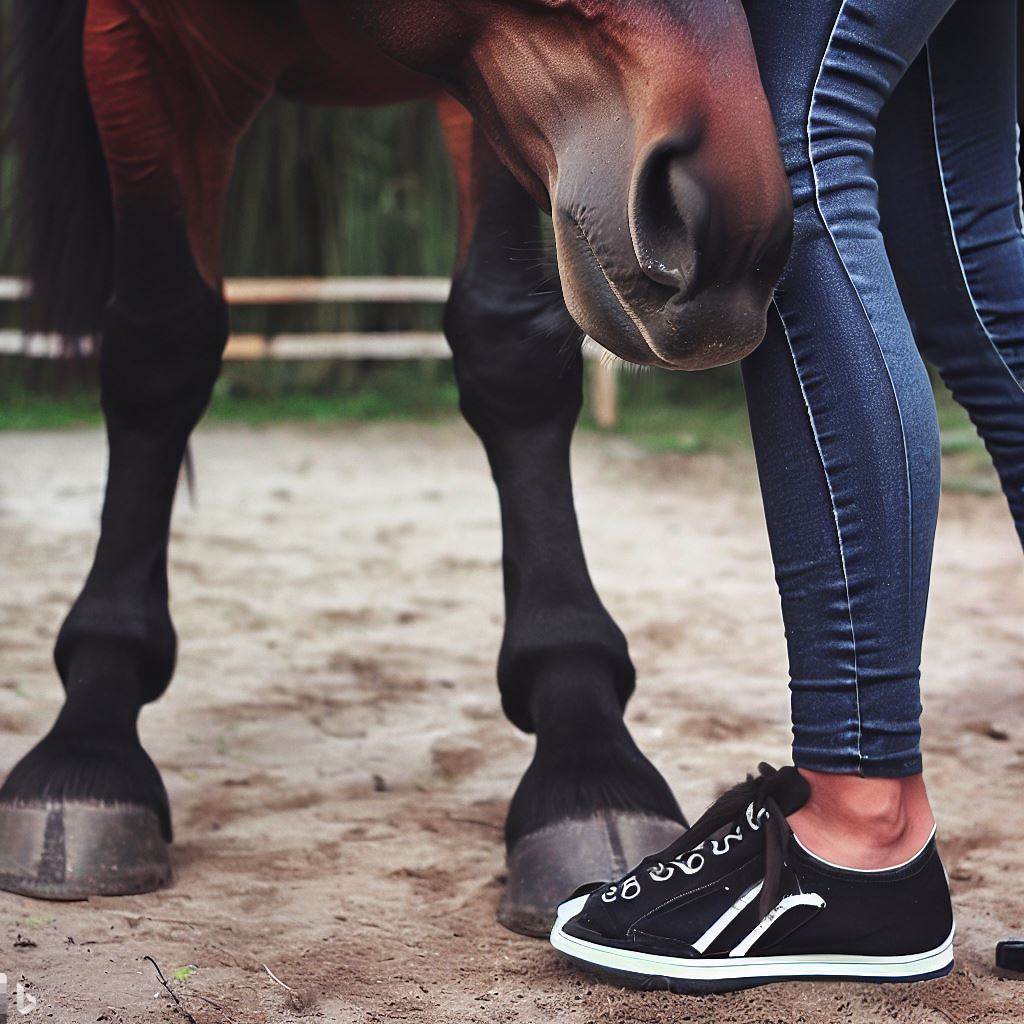
- Lack of Ankle Support: Sneakers typically have flat soles and lack proper ankle support. Riding requires stable and secure foot placement, and a good riding boot should provide support around the ankles to prevent accidental injuries.
- Slippage: Sneakers may not have enough grip on the stirrups, leading to potential slippage and loss of your stirrups while riding. A proper riding boot should have a sole designed to prevent slippage and ensure a firm grip in the stirrups.
- Foot Protection: Riding involves working with large animals and heavy equipment. Sneakers offer minimal foot protection compared to riding boots, which are designed to withstand potential impacts, abrasions, and crushing hazards.
- Durability: Riding is a demanding activity that puts stress on footwear. Sneakers are not designed for the rigors of equestrian sports and may wear out quickly, leading to decreased performance and safety.
- Safety Standards: Riding boots often meet specific safety standards your barn or stable may set for equestrian activities. They are designed with features like thicker leather in the toes and at least a 1/2 ” heels to protect the rider’s feet from potential accidents, such as being stepped on by the horse.
A good riding boot should offer the following features:
- Heel and Ankle Support: Riding boots typically have a slight heel to prevent the foot from sliding through the stirrup and offer stable ankle support, reducing the risk of sprains or twists.
- Sturdy Sole with Grip: The sole of a riding boot should be designed to provide grip in the stirrups and ensure a secure footing while walking on uneven terrain.
- Reinforced Toes and Heels: To protect the rider’s feet from accidental impacts and compression, riding boots often have reinforced toes and heels.
- Durable Materials: Riding boots are made from high-quality materials that can withstand the demands of equestrian activities and provide long-lasting performance.
- Proper Fit: A well-fitting riding boot is essential for comfort and safety. It should be snug around the foot and ankle without being too tight or causing discomfort.
- Breathability: Riding boots with breathable materials help keep the feet dry and comfortable, especially during extended periods of riding.
- Riding Discipline Specific Features: Different riding disciplines might have specific boot requirements. For example, dressage riders may prefer dress boots, while hunter riders may prefer field boots and young riders will often wear paddock boots with half chaps. Western riders usually use cowboy or western boots.
Always wear proper riding boots when engaging in horseback riding to ensure your safety and enjoy a more comfortable riding experience.



Recent Comments